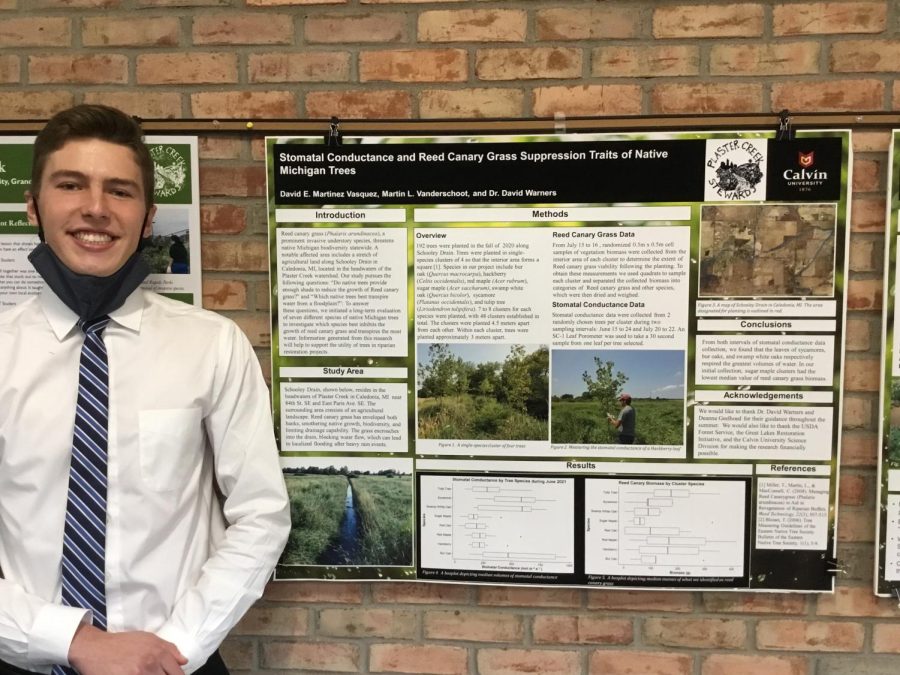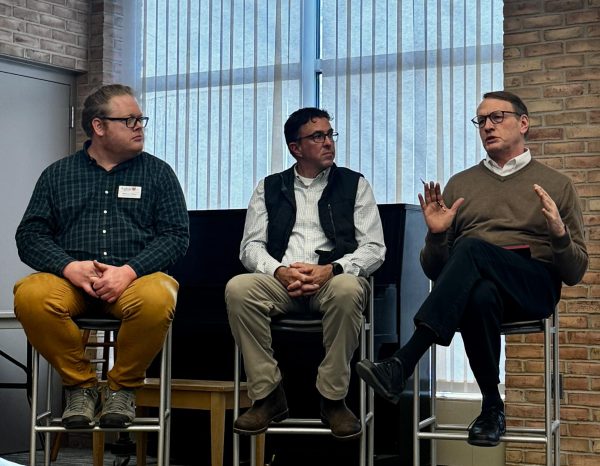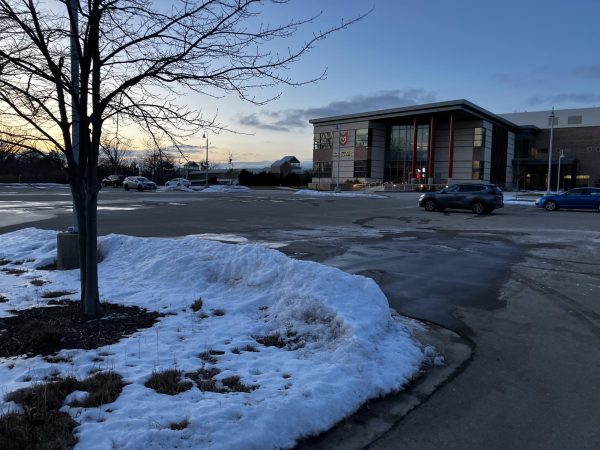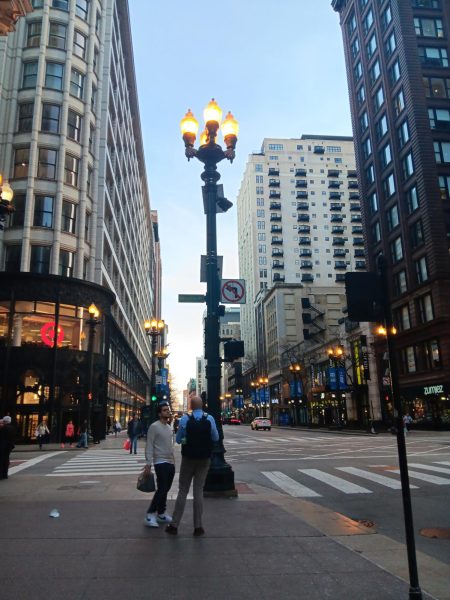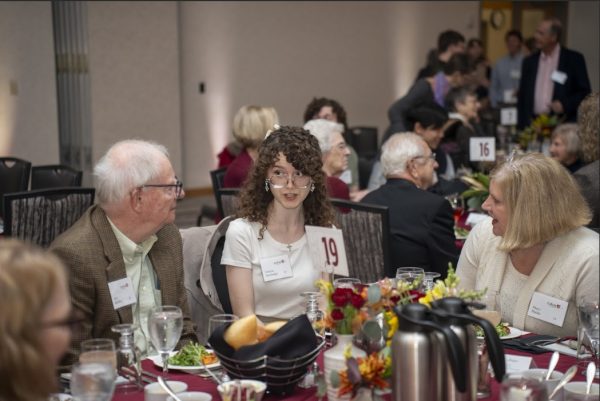From stars to cells, Calvin students showcase summer research
Changes in course release costs will lead to more research opportunities for faculty and students.
Nearly 100 students participated in funded scientific research last summer, working with 36 professors on a total of 73 projects. Students presented these projects in a poster fair on Oct. 22 in the Science Complex.
The number of students with funded research this year is a significant rise from last year’s 57 students, as the COVID-19 pandemic caused many projects in 2020 to shut down and prevented students from joining research in person. About 28 percent of student research positions were externally funded by grants from outside the university, while 56 percent were funded by private donors and 15 percent were internally funded by Calvin.
Spread across different parts of the Science Complex, this year’s student showcase featured research from a diverse variety of scientific disciplines, from ecology to cardiovascular health.
Junior Katie Van Dyke and fellow student researcher Elizabeth Hansen worked on a long-term project focused on an ecosystem preserve north of Grand Rapids in Grandville, on Flat Iron Lake. The land had been restored into a prairie by Carol and Fritz Rottman, and donated to Calvin in chunks over many years.
The project began in 2010 and Van Dyke, who is majoring in biology and writing, is the most recent of many Calvin students to work on it. She and Hansen had the opportunity to study the effects of climate change over time on the blooming period of the prairie plants in the preserve, all whilst living directly on the land. According to Van Dyke, a typical week of research included doing routine surveys of the ecosystem preserve and taking account of when certain species started, continued and finished flowering for the summer season.
“The goal is to see how plants are affected by the shifting climate and ultimately see if there is anything we can do about it,” Van Dyke said. “I sort of fell in love with the land and with the work. Everyday was filled with just walking around looking at flowers. And I understand that not all field work looks like that in the professional world, but just being out and getting my hands dirty a little bit was such an experience.”
Martin Vanderschoot, a junior majoring in environmental science, was one of 15-20 students who conducted research at Plaster Creek this past summer. These students worked on a variety of projects all supervised by Professor Dave Warners. The Plaster Creek Stewards is a community environment restoration project originally initiated by two Calvin professors, and currently maintained with support from several local organizations, including Calvin.
Vanderschoot, along with senior David Martinez Vasquez, conducted research on the biomass of reed canary grass, an invasive plant species that has covered both banks of an agricultural creek, smothering native species and biodiversity and creating a risk of localized flooding. Vanderschoot and Vasquez experimented on different tree species to find out which species had the best ability to conduct water and control flooding. They also tried to find correlations between tree species and reed canary biomass, in an effort to discover the best tree for reducing both risk of flooding and the growth of reed canary grass. These Plaster Creek research projects contributed towards an understanding of environmental factors and ways to restore damaged lands. The program’s long-standing contributions to environmental education were recognized internationally in 2014
Marian Henderson, a junior majoring in biology and Spanish, did research this summer with the Samuel and Jean Frankel Cardiovascular Center at the University of Michigan Health on testing the efficacy of Adeno-associated-virus-mediated gene replacement therapy to cure hypertrophic cardiomyopathy, an inherited cardiac disease. Originally accepted for summer of 2020, pandemic measures delayed her involvement to summer of 2021.
Currently available treatments for hypertrophic cardiomyopathy, Henderson explained, are limited to treating the symptoms of the disease and increasing the patient’s quality of life. Henderson’s research focused on gene therapy in search of a treatment option that would target the root cause of the disease and reverse cardiomyopathy.
The experience, Henderson said, taught her how much of a learning process researching can be: “If one experiment fails, it doesn’t mean a failure in general, but becomes a new problem to solve in the research process.”



